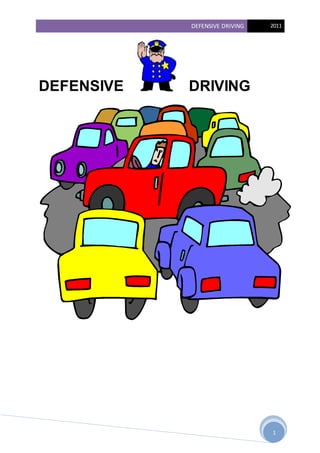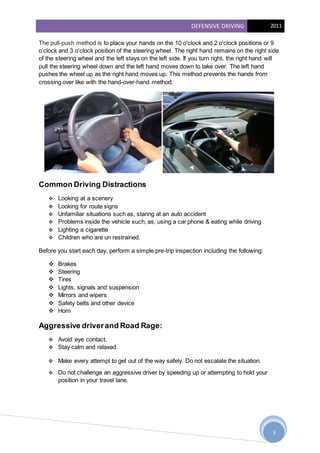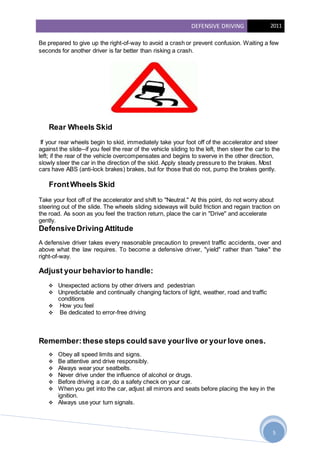The document provides information on defensive driving techniques. It discusses proper seating position, recommended hand positions on the steering wheel, common driving distractions to avoid, pre-trip vehicle inspections, how to handle aggressive drivers and road rage, what to do if your rear or front wheels skid, developing a defensive driving attitude, and tips for night driving and rural driving. Check your tires regularly as they are critical for safety, and be aware that tires have expiration dates after 4 years.














